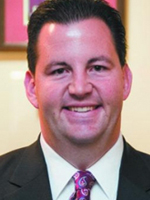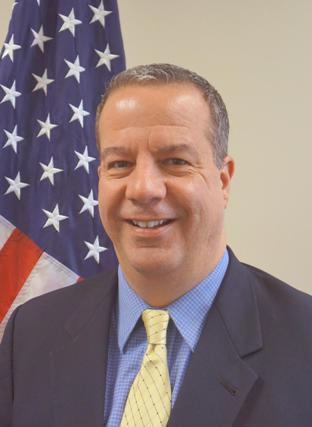Welcome!
 On behalf of the Ohio Prosecuting Attorneys Association let me welcome you to our website. Here you will find information about the role of prosecuting attorneys and our Association. On behalf of the Ohio Prosecuting Attorneys Association let me welcome you to our website. Here you will find information about the role of prosecuting attorneys and our Association.
The prosecutor’s role in the criminal justice system is often misunderstood. Ohio’s 88 elected county prosecutors are committed to justice. The prosecutors I know aren’t motivated by “winning” or trying to send everyone to prison for as long as possible. They are motivated by their responsibility to enforce the law, to make their communities safe and to fairly administer justice. And fairness and justice is what matters most of all. Prosecutors live this every day.
Part of our role is to have a voice in public policy debates affecting the criminal justice system. To that end, Ohio’s prosecutors serve an important function reviewing and advocating for legislation with one goal in mind – the safety and security of our communities.
Ohio’s prosecutors are active in community and civic affairs. From speaking to school children about the dangers of drugs to serving on numerous committees and commissions, Ohio’s elected prosecutors and their assistants serve in vital roles.
As legal counsel to a variety of County elected officials, offices and agencies your county prosecutor assists in ensuring efficient and responsible county government.
I’m proud to be a prosecutor and honored to serve as President of the Ohio Prosecuting Attorneys Association. Please take your time and look around. Hopefully you will find information here that is educational and informative about your county prosecutor.
Keller J. Blackburn
Athens County Prosecutor
2025 OPAA President
|
Career Opportunities
Amicus Committee Guidelines
The Ohio Prosecutor Podcast

|
Phishing Trip? How to Spot "Fishing"
 They say if something smells fishy, it probably is—and when it comes to online scams, that old saying holds true. But unlike a relaxing Saturday with a rod and reel, the kind of "phishing" I'm talking about is a digital trap set by criminals to hook your personal information. As prosecutors, we’ve handled cases where victims lost thousands of dollars or had their identities stolen—all because they clicked on the wrong link. The good news is you don’t have to take the bait. They say if something smells fishy, it probably is—and when it comes to online scams, that old saying holds true. But unlike a relaxing Saturday with a rod and reel, the kind of "phishing" I'm talking about is a digital trap set by criminals to hook your personal information. As prosecutors, we’ve handled cases where victims lost thousands of dollars or had their identities stolen—all because they clicked on the wrong link. The good news is you don’t have to take the bait.
What is Phishing?
Phishing (spelled with a “ph” to sound techy) is a form of cybercrime where scammers impersonate trusted organizations or people to trick you into giving up sensitive information—like your login credentials, credit card numbers, or Social Security number. It’s usually done through email, text messages, or phone calls. The goal is to create a convincing enough lure that you’ll respond without thinking.
The "Bait” - - Common Signs of a Phishing Attempt
Think of phishing messages as baited hooks. Here’s what they often look like:
1. Urgency or Fear Tactics
The message might claim your account will be locked or your bank has detected fraud. They want you to act quickly—before you pause to consider whether it’s real.
2. Suspicious Email Addresses
Check the sender’s address. A scam pretending to be from Amazon might actually come from something like “support@amaz0n-services.co.” One letter off can be the difference between safe and scammed.
3. Unsolicited Requests for Personal Info
Banks and government agencies won’t ask you to confirm your password or Social Security number by email or text. If they do, it’s a red flag.
4. Unexpected Links or Attachments
Don’t click on links or download attachments unless you’re certain they’re legitimate. Hover over the link to preview where it actually leads.
5. Too Good to Be True Offers
“You’ve won a free iPhone!” Sure you have. If it sounds too good to be true, it’s almost certainly a scam.
Modern Phishing Tactics to Watch For
Phishing isn’t just about emails anymore. Today’s scammers use:
• Text messages (“smishing”) from fake delivery services or mobile carriers.
• Social media DMs from hacked friend accounts asking for help or money.
• Fake customer service calls claiming your device has a virus.
• Impersonation of trusted institutions, like your bank or even the IRS.
How to Stay Off the Hook
1. Slow Down
Don’t react out of panic or excitement. Scammers thrive on impulsive clicks.
2. Verify Through Official Channels
If you get a suspicious message, go directly to the company’s website or call their real customer service number—not the one in the message.
3. Enable Two-Factor Authentication
This adds an extra layer of protection to your accounts, making it harder for hackers to get in even if they have your password.
4. Report Phishing Attempts
Forward suspicious emails to reportphishing@apwg.org and report scams to reportfraud.ftc.gov.
In Closing
As a prosecutor, I can promise you this: the people behind phishing scams are criminals, not pranksters. They don’t care who they hurt - they’re just looking for their next easy catch. But if you learn to spot the bait, you won’t be reeled in.
So the next time an unexpected email or text tries to lure you in, ask yourself: Is this a phishing trip—or just someone fishing for my information? When in doubt, don’t bite.
Special thanks to Union County Prosecutor David Phillips for this contribution.
|
|

